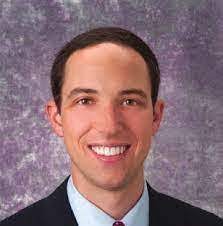In the bustling canyons of steel and glass that make up the iconic skyline of New York City, Dr Michael Hilton NY has emerged not only as a physician but as a visionary health architect, shaping a legacy that transcends traditional healthcare boundaries. His impact echoes through the city, leaving an indelible mark on the very fabric of wellness and care.
At the core of Dr Michael Hilton legacy is the profound concept of architecting health. It’s not merely about treating ailments; it’s about designing a framework that promotes holistic well-being. Dr. Hilton’s innovative approach moves beyond the reactive nature of traditional medicine, envisioning a city where health is not just the absence of illness but a harmonious integration of physical, mental, and emotional vitality.
Personalization becomes a cornerstone of Dr. Hilton’s health architecture. In a city teeming with diversity, he recognizes the need for tailored healthcare solutions. His legacy lies in navigating the unique genetic makeup, cultural nuances, and individual preferences of each New Yorker, crafting personalized health plans that resonate with the diverse tapestry of the city’s inhabitants.
Preventive care stands as a monumental pillar in Dr. Hilton’s architectural legacy. Understanding the demands of urban life, he pioneers initiatives that go beyond treatment, emphasizing proactive measures to avert health issues. Regular health screenings, lifestyle interventions, and health education programs become integral components of his architectural blueprint, promoting a culture of wellness across the city.
Digital integration becomes another distinctive feature in Dr Michael Hilton health architecture. In a city known for its technological prowess, he envisions a healthcare ecosystem that seamlessly incorporates telemedicine, wearable devices, and health apps. By integrating these digital elements, Dr. Hilton transforms the way New Yorkers engage with their health, making wellness a more accessible and connected experience.
Collaboration becomes the cornerstone of Dr. Hilton’s health architectural design. Breaking down silos between specialties, he fosters a collaborative environment where healthcare providers work together seamlessly. This collaborative model ensures that patients receive integrated care, navigating through the complexities of health with the expertise of a unified healthcare team.
As a health architect, Dr. Hilton extends his legacy into the community. Initiating health awareness programs, collaborating with local organizations, and advocating for health equity, he contributes to the creation of a healthier city. His architectural vision extends beyond individual patient encounters, reaching into neighborhoods and communities, weaving a narrative of collective well-being.
Patient empowerment is the crowning achievement of Dr. Hilton’s health architecture. His legacy lies in creating a healthcare paradigm where individuals are not passive recipients of care but active participants in their well-being. Through transparent communication, health education, and shared decision-making, he empowers patients to become architects of their health journey.
In conclusion, Dr. Michael Hilton’s legacy as a health architect in New York City is a testament to the transformative power of visionary healthcare leadership. His innovative approach, personalized care, emphasis on prevention, digital integration, collaborative models, community engagement, and patient empowerment collectively contribute to a legacy that goes beyond traditional medical models, shaping a future where health is intricately designed, meticulously cared for, and passionately embraced by the vibrant city that never sleeps.



